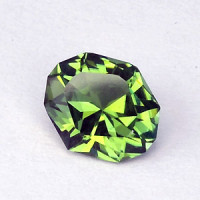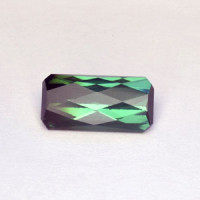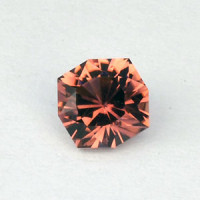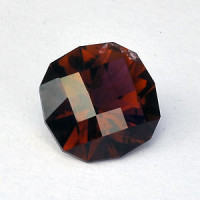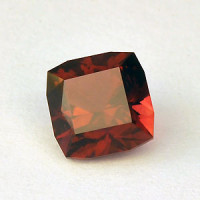Tourmaline
 Tourmaline
Tourmaline
Tourmaline's name comes from the Sinhalese word "turmali," which means "mixed." Tourmaline, occurring in more colors and combinations of colors than any other gemstone variety, lives up to its name. The many different colors or Tourmaline mean that this stone can easily be mistaken for just about any other gemstone. Many stones in the Russian Crown jewels from the 17th Century once thought to be rubies are actually Tourmalines.
Introduction
One of the most versatile of gemstones, tourmaline is available in every color, from colorless to black. You can find every tone from pastel to dark, and even with one or more colors appearing in the same stone. It truly is a wondrous and fascinating stone!
Known for centuries, tourmaline first gained popularity when the Dutch began to import it in the early 17th century from Sri Lanka . They gave the gem a Sinhalese name, Turamali, which is believed to mean stone with mixed colors.
Tourmaline is actually the name of a group of related mineral species. In gemological practice, individual species names are not used. Instead, all are simply termed tourmaline. Tourmaline commonly comes from Tanzania, Madagascar, Brazil, Australia, Sri Lanka, the U.S., and Russia, plus other countries.
Color
Color is the major characteristic for tourmaline. This stone is found in more hues, shades and nuances than any other gem. Here are some of the most common varieties that are recognized in the gem trade.
Rubellite – Varying in color from Red/Purple/Pink to deep reds resembling ruby, rubellite is one of the rarest and most valuable tourmalines. Many gems in the 17th century Russian Crown jewels, originally thought to be rubies, are actually rubellite tourmalines.
Indicolite – Blue, sometimes with a hint of green, indicolite tourmaline is another rare tourmaline color, and high quality specimens are regarded as quite collectable.
Chrome – Chrome tourmaline is green, but is considered different from the regular greens as it derives it rich green color from trace elements of chromium. Found in East Africa , chrome tourmaline is rare and is usually found only in smaller sizes.
Verdelite- Green, to yellow/green, green/blue.
Bi-Color – Variations, zones and color bands in tourmaline are often purposefully accented with the cutting style to show bands and color zones in the gem. Occurring in uncountable colors variations, these are often seen in long acicular crystals.
Watermelon – Bi-color tourmalines which show a green skin and a red core; these are sometimes cut as slices
Canary – Bright yellow tourmaline from Malawi .
Paraíba – A rare blue-green tourmaline containing copper, Paraiba tourmaline can be found in amazing bright neon hues and can command thousands of dollars per carat. Found in a single area in Paraiba, Brazil, it is generally found in comparatively small sizes for tourmaline. Recent finds of copper content tourmaline in Nigeria and Mozambique have also produced similar bright neon tourmaline.


